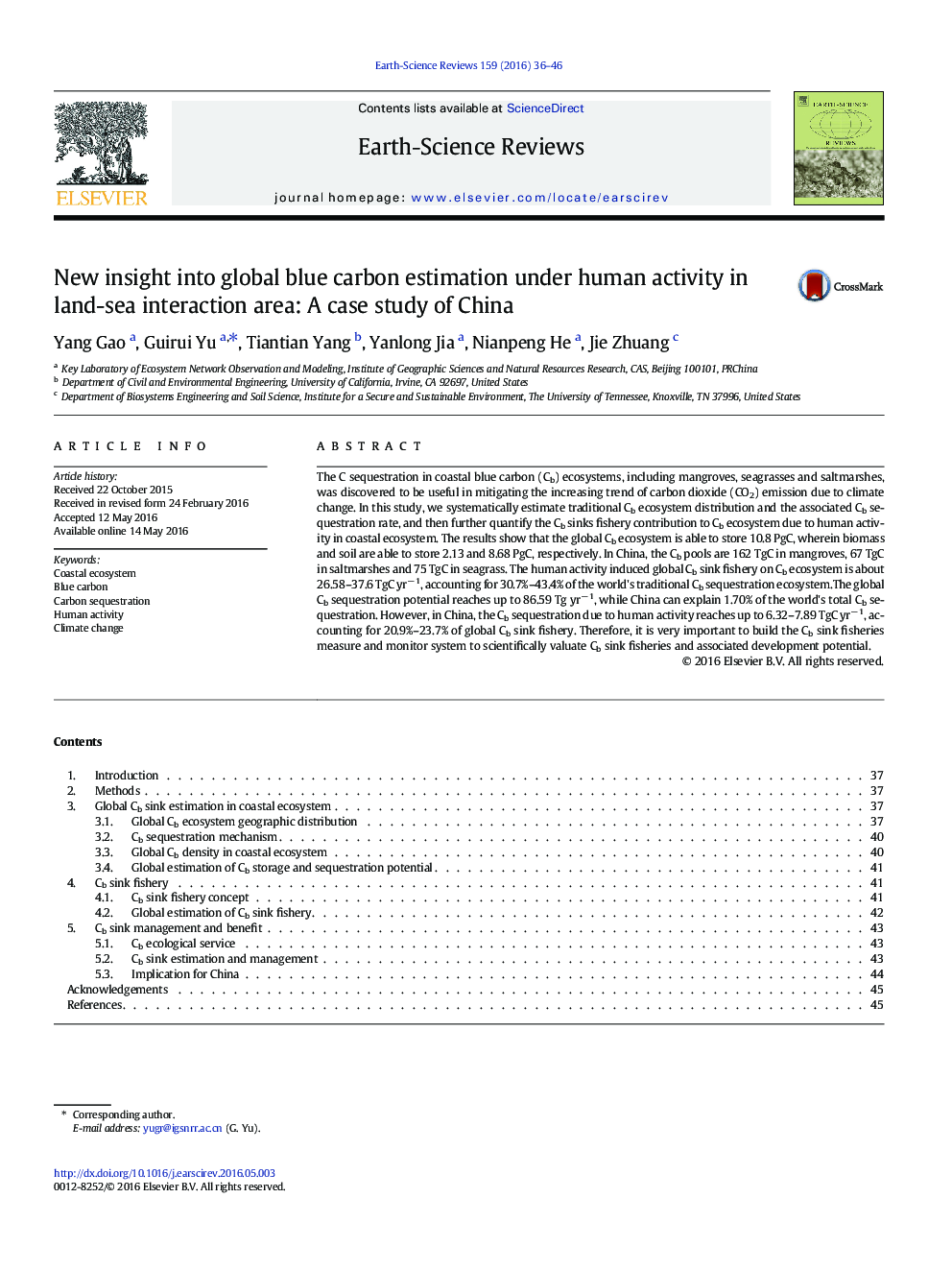| Article ID | Journal | Published Year | Pages | File Type |
|---|---|---|---|---|
| 6442837 | Earth-Science Reviews | 2016 | 11 Pages |
Abstract
The C sequestration in coastal blue carbon (Cb) ecosystems, including mangroves, seagrasses and saltmarshes, was discovered to be useful in mitigating the increasing trend of carbon dioxide (CO2) emission due to climate change. In this study, we systematically estimate traditional Cb ecosystem distribution and the associated Cb sequestration rate, and then further quantify the Cb sinks fishery contribution to Cb ecosystem due to human activity in coastal ecosystem. The results show that the global Cb ecosystem is able to store 10.8 PgC, wherein biomass and soil are able to store 2.13 and 8.68 PgC, respectively. In China, the Cb pools are 162 TgC in mangroves, 67 TgC in saltmarshes and 75 TgC in seagrass. The human activity induced global Cb sink fishery on Cb ecosystem is about 26.58-37.6 TgC yrâ 1, accounting for 30.7%-43.4% of the world's traditional Cb sequestration ecosystem.The global Cb sequestration potential reaches up to 86.59 Tg yrâ 1, while China can explain 1.70% of the world's total Cb sequestration. However, in China, the Cb sequestration due to human activity reaches up to 6.32-7.89 TgC yrâ 1, accounting for 20.9%-23.7% of global Cb sink fishery. Therefore, it is very important to build the Cb sink fisheries measure and monitor system to scientifically valuate Cb sink fisheries and associated development potential.
Related Topics
Physical Sciences and Engineering
Earth and Planetary Sciences
Geology
Authors
Yang Gao, Guirui Yu, Tiantian Yang, Yanlong Jia, Nianpeng He, Jie Zhuang,
